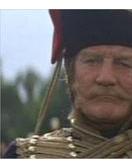 Mario Bava delivers a classy anthology with Black Sabbath (1963). Appropriately, it bridges his earlier period horror films and modern-day slashers in an agreeably spooky show.
Mario Bava delivers a classy anthology with Black Sabbath (1963). Appropriately, it bridges his earlier period horror films and modern-day slashers in an agreeably spooky show.Boris Karloff introduces three horror stories. "The Drop of Water" shows greedy nurse Helen (Jacqueline Pierreux) stealing a deceased medium's ring and suffering supernatural consequences. "The Telephone" features call girl Rosy (Michele Mercier) harassed by a crank caller who claims to be her deceased lover Frank. The final story, "The Wurdalak," stars Karloff himself as a Russian nobleman who returns home after slaying a vampire, placing his family and traveler Vladimir (Mark Harmon) in danger.
Black Sabbath ambitiously careers through assorted styles and approaches. His first two stories are modern psychodramas with supernatural hints, while the finale is a full-blown epic with location shooting and action scenes. Bava's lush Technicolor compositions are striking throughout, from the blinking green-and-red lights in Helen's apartment to "The Wurdalak's" mist-shrouded nightmares, meshing beautifully with Ubaldo Terzano's lingering tracking shots. Karloff's amusing introductions provide self-effacing levity between episodes.
"The Drop of Water" is a beautifully realized vignette with a simple moral about respecting the dead. Bava films in repeatedly long takes with minimal dialog or music; diegetic sounds steadily build from banality to terror. Endlessly dripping faucets and meowing cats give way to terror as Helen encounters the medium's ghost, face gnarled into a ghastly rictus. It's simple, effective terror starkly registered, with Jacqueline Pierreux's haughtiness slipping into fright.
"The Telephone" prefigures the giallo films Bava helped pioneer, but is rather thin gruel on its own. Fortunately, "The Wurdalak" returns to the gothic horror of Bava's Black Sunday. As in that film, Bava shows a family consumed by a vampiric curse, settings alternating between an isolated homestead and dilapidated ruins. Karloff relishes his cadaverous makeup but underplays his part, while Bava inundates us with spine-chilling imagery: a dead child begging to enter the house; a terrified horse bolting across the moors; the family watching in approval as Vladimir's inducted into their clan.
Even Black Sabbath's weakest segment is well-shot and entertaining; its finest are among the best Italian horror has to offer. If nothing else, the movie gifted its name to one of England's most successful rock bands.

